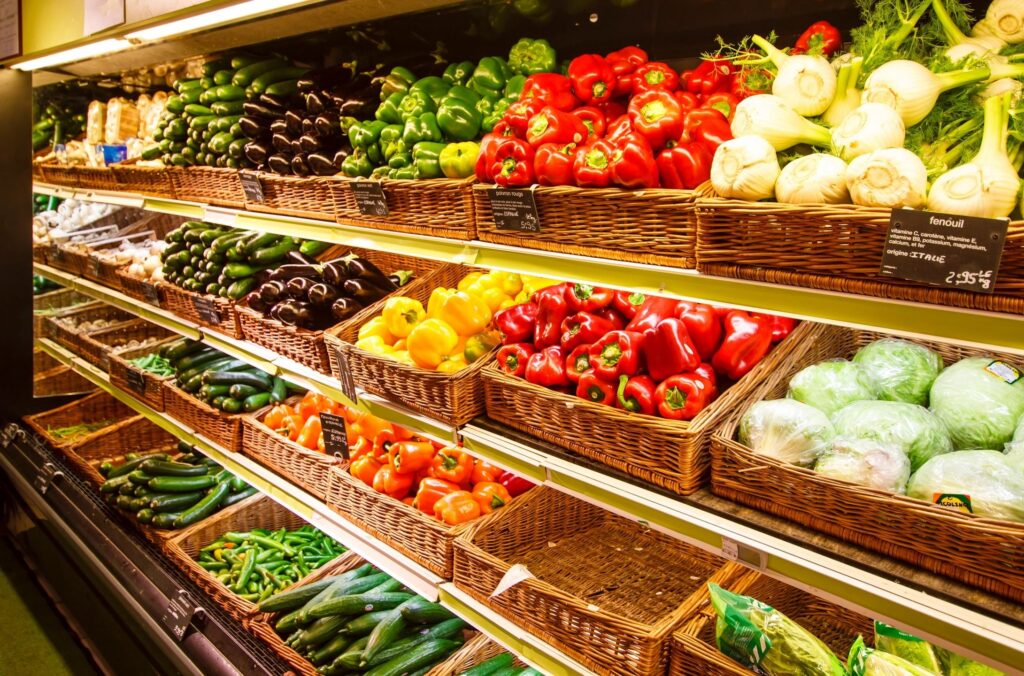The grocery store can be a maze of aisles filled with tempting treats, confusing labels, and overwhelming choices. However, with a little guidance and preparation, you can navigate the grocery store with confidence and make healthy food choices that support your well-being. We’ll provide you with practical tips and strategies for navigating the grocery store and filling your cart with nutritious foods that nourish your body and mind.
Understand Your Nutritional Needs
Before you even head to the grocery store, reflect on your nutritional needs. What are your goals or what kind of diet would you like to stick with? If you’re starting a high fat Keto diet you’ll need more healthy fats as opposed to carbs or protein. If you’re on a high-protein diet, you’ll want to pick up items with a good source of protein. Everyone’s diet and nutritional needs vary. Discover your nutritional goals and then plan meals around your needs.
Make a Plan
Take some time to plan your meals for the week. You don’t have to meal prep (if you don’t need to) but having an understanding of the meals you want to eat during the week will help you stay focused at the grocery store. Consider what ingredients you’ll need for breakfast, lunch, dinner, and snacks, and make a list to help you avoid impulse purchases. Planning your meals can help you make healthier choices and reduce food waste.
Tips for Navigating the Grocery Store

Once you get to the grocery store, here are a few tips that can help you make healthier food choices.
Shop the Perimeter
One of the simplest strategies for making healthy food choices at the grocery store is to focus on shopping the perimeter. This is where you’ll find fresh produce, lean proteins, dairy products, and whole grains. If your goal is to eat healthier in general without a specific nutritional diet, look to fill your cart with colorful fruits and vegetables, lean cuts of meat or plant-based proteins, low-fat dairy products, and whole grains like brown rice, quinoa, and oats. Otherwise, stick to the nutritional needs you outlined before.
Read Labels
When shopping for packaged foods, take the time to read the nutrition labels carefully. Look for products that are low in added sugars, sodium, and unhealthy fats, and high in fiber, vitamins, and minerals. Pay attention to serving sizes and ingredient lists, and choose products with recognizable, whole-food ingredients. Some items may be marketed as “healthy” or high in protein, but aren’t as healthy as they say.
Choose Whole Foods
Whenever possible, opt for whole foods over processed or packaged foods. Whole foods like fruits, vegetables, whole grains, lean proteins, and healthy fats are nutrient-dense and provide essential vitamins, minerals, and antioxidants. Incorporating more whole foods into your diet can help you feel more satisfied, energized, and nourished. Just keep in mind the serving size and what’s actually in the whole food and how it aligns with your specific nutritional needs. For example: while bananas are a healthy fruit, eating more than a serving can quickly increase your carbohydrate and sugar intake. They also wouldn’t fit well in a high-protein/low carbohydrate diet.
Stock Up on Staple Foods
Keep your pantry stocked with healthy staple food choices that you can use to create quick and easy meals. Some essential pantry items include canned beans, lentils, whole grain pasta, canned tomatoes, nuts and seeds, olive oil, herbs and spices, and low-sodium broths. Having these ingredients on hand can make meal prep a breeze and help you resist the temptation of less nutritious options.
Limit Over Processed Foods
While some packaged foods can be convenient and nutritious, many are loaded with added sugars, unhealthy fats, and preservatives. Try to limit your intake of over processed foods like sugary snacks, chips, cookies, and pre-packaged meals, and focus on choosing whole, minimally processed options instead. If you struggle to cook daily, try meal prepping before your work week begins to make a more nutritious meal for lunch, breakfast, or dinner.
If you struggle with snacking during the day, try to prepare or purchase meals that will keep you full for a longer period of time. A meal that is high in fat, protein or fiber can help you feel fuller longer. Another option is to choose healthy snacks. Whole almonds, protein bars, or Greek yogurt are a few options that may fit into a variety of nutritional or diet plans.
Practice Mindful Shopping
Finally, practice mindful shopping by staying present and attentive as you make your way through the grocery store. Avoid shopping when you’re hungry, tired, or rushed, as this can lead to impulsive decisions and unhealthy choices. Take your time to explore the aisles, compare options, and make thoughtful decisions that align with your health goals.
Navigating the grocery store doesn’t have to be a daunting task. By making a plan, focusing on whole foods, reading labels, and practicing mindful shopping, you can fill your cart with nutritious foods that support your health and well-being. With a little preparation and intention, you can transform your grocery shopping experience into a positive and empowering journey toward a healthier lifestyle. Happy shopping!
-Coach Onelio
